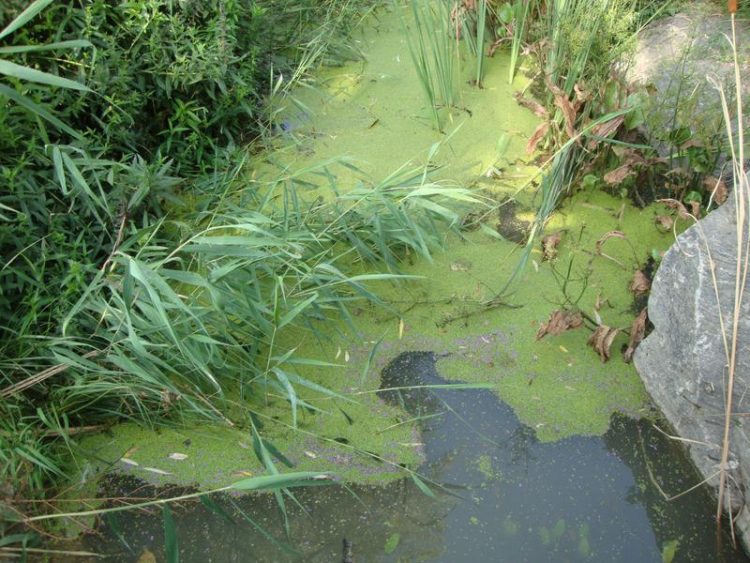Decoding the genomes of duckweeds: low mutation rates contribute to low genetic diversity

Researchers took samples of duckweed from 68 waterbodies worldwide. Klaus J. Appenroth
Duckweeds – for many aquatic animals like ducks and snails, a treat, but for pond owners, sometimes a thorn in the side. The tiny and fast-growing plants are of great interest to researchers, and not at least because of their industrial applications – for example, to purify wastewater or generate energy.
An international research team from Münster, Jena (both Germany), Zurich (Switzerland) and Kerala (India) have recently studied the genomics of the giant duckweed. They discovered that genetic diversity, i.e. the total number of genetic characteristics that are different among individuals, is very low.
“This is remarkable given that their population size is very large – there can, for example, be millions of individuals in a single pond”, says Shuqing Xu, professor for plant evolutionary ecology at the University of Münster and lead author of the study.
To understand the reason behind this mystery, a team of plant researchers headed by Dr. Meret Huber from the Max Planck Institute for Chemical Ecology in Jena and the University of Münster measured the mutation rate of this duckweed under outdoor conditions, i.e. how many mutations accumulate per generation.
The result: low genetic diversity in this plant was accompanied by an extremely low mutation rate. “Our study emphasizes that accurate estimates of mutation rates are important for explaining patterns of genetic diversity among species”, says Meret Huber. The results are not only relevant for future studies on the evolution of plants, including many crops that have similar reproductive strategies like duckweeds, they will also accelerate the use of duckweeds both for basic research and industrial applications. The study was published in the journal “Nature Communications”.
Background:
Although mutations are the raw materials for evolutionary changes, they are often accompanied by fitness impairments. Evolutionary researchers have hypothesized that natural selection in species with large populations drives the mutation rate to as low as possible. According to this hypothesis, a species with a very large population size may under certain conditions evolve an extremely low mutation rate – which in turn can result in a very low genetic diversity. Until now, however, scientists had not been able to show this connection in eukaryotes, i.e. organisms whose cells have a nucleus. One reason for this is that mutation rates are difficult to measure experimentally.
The researchers took samples of the giant duckweed (Spirodela polyrhiza) from 68 waterbodies distributed all over the world and read the DNA sequences of their entire genomes. They found that in congruence with their geographic origin the samples fall into four genetic clusters: America, Europe, India and Southeast Asia. Based on the genome sequence information, they found that the genetic diversity of the species is among the lowest values reported in multicellular eukaryotes.
Because genetic diversity is determined by mutation rate and effective population size, the scientists then experimentally estimated the mutation rates and calculated effective population size. Since external conditions can influence the mutation rate, they performed the experiments under outdoor conditions. The result: by sequencing genomes, they found that the mutation rate in the giant duckweed was the lowest ever determined for multicellular eukaryotes. The estimated effective population size, as expected, is rather large.
The researchers suspect that the enormous population size of the giant duckweed, and therefore the large possibilities of selection in the course of evolution, has led to the reduction of mutations to a minimum. This in turn can explain the low genetic diversity. “Our study provides new insights into why and how genetic diversity differs among different species”, says Shuqing Xu.
Together with their collaborators, the scientists are currently working on analyzing genomes of even more duckweed samples and plan to carry out outdoor selection experiments. They wish to discover which other factors might have played roles in shaping the evolution of this plant.
Funding:
The study received financial support from the European Commission, the Alfred and Anneliese Sutter-Stöttner Foundation, the Centre for Adaptation to a Changing Environment at ETH Zurich, the Max Planck Society, and the University of Münster.
Prof. Dr. Shuqing Xu
Westfälische Wilhelms-Universität Münster (WWU)
Institute for Evolution & Biodiversity
Tel: +49(0)251-83-21090
shuqing.xu@uni-muenster.de
Dr. Meret Huber
Westfälische Wilhelms-Universität Münster (WWU)
Institut für Biologie und Biotechnologie der Pflanzen
huberm@uni-muenster.de
S. Xu et al. (2019): Low genetic variation is associated with low mutation rate in the giant duckweed. Nature Communications; DOI: 10.1038/s41467-019-09235-5
Media Contact
More Information:
https://www.uni-muenster.de/All latest news from the category: Life Sciences and Chemistry
Articles and reports from the Life Sciences and chemistry area deal with applied and basic research into modern biology, chemistry and human medicine.
Valuable information can be found on a range of life sciences fields including bacteriology, biochemistry, bionics, bioinformatics, biophysics, biotechnology, genetics, geobotany, human biology, marine biology, microbiology, molecular biology, cellular biology, zoology, bioinorganic chemistry, microchemistry and environmental chemistry.
Newest articles

Bringing bio-inspired robots to life
Nebraska researcher Eric Markvicka gets NSF CAREER Award to pursue manufacture of novel materials for soft robotics and stretchable electronics. Engineers are increasingly eager to develop robots that mimic the…

Bella moths use poison to attract mates
Scientists are closer to finding out how. Pyrrolizidine alkaloids are as bitter and toxic as they are hard to pronounce. They’re produced by several different types of plants and are…

AI tool creates ‘synthetic’ images of cells
…for enhanced microscopy analysis. Observing individual cells through microscopes can reveal a range of important cell biological phenomena that frequently play a role in human diseases, but the process of…





















